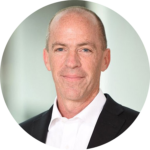New Member Spotlight: Henkel
UIDP welcomes Henkel, a multinational chemical and consumer goods company headquartered in Düsseldorf, Germany, as a new member organization. Henkel aims to develop different kinds of strategic partnerships with selected partners to challenge its innovative business, and is developing additional growth potential through the expansion of strategic partnerships.
UIDP spoke with Michael Todd, vice president for innovation and new business development, about his goals for membership in UIDP.
UIDP: What is Henkel—specifically, its Adhesive Technologies division—hoping to gain from UIDP membership in the coming year?
Todd: Henkel is 144 years old, so it has been involved with industry–academic relations for decades. We have R&D centers around the world. But we still struggle to find the right mechanism to really drive a win-win academic-industry collaboration.
I think many companies and most academic institutions struggle to find that middle ground where the research topics of an academic institution meet the near–term needs of an industrial company like ours. My first and foremost reason for joining UIDP is to learn from others how companies and academic institutions are addressing that disconnect. I want to share experience and hear best practices. I hope to identify potential collaboration partners, either on the industrial or the academic side, that we’re not engaged with today.
UIDP: What are some of the current challenges that you’re facing with the development of some of these partnerships?
Todd: I’d like to answer that with an example. For almost 10 years, we had a direct investment into a large European technical university, where we set up a Henkel Institute on campus. With that institute we funded a number of postdocs, grad students, and paid some stipends for some of the research professors who were devoting time to support us. Looking back to the time when we set it up, this was really something unique and different for us at Henkel; instead of just creating a paper contract, we were putting ourselves into the campus. We created a much closer collaboration model between the professors (and their platforms) and our R&D teams.
But about a year ago, we wound down the program. We discovered that, even with that close, embedded relationship, it did not necessarily solve the one challenge that we faced, which was identifying those programs that were the right focus for both the institute and for Henkel. And I think this is the one key learning that comes out of it: We need to identify the perfect match, and that perfect match may change over time. What we had was very well done early on. But over time, our targets changed, and the institute’s focus areas changed. And so we found ourselves in a position where we were no longer working together on programs that made sense for both sides.
The second challenge is that our business continues to evolve, and the capabilities and skill sets and knowledge that we’re now seeking are far different from what they were 10 years ago. The relationships we’ve built—either with brick and mortar or with funded research programs with a range of universities—have traditionally been built upon technology capabilities that were relevant for the time. But we have the biggest opportunity today for collaboration in things like data science, machine learning, and artificial intelligence. These are areas where I would say we have not yet done enough to identify who the leaders are on the academic side with respect to new skill sets and capabilities.
UIDP: Is there an interesting fact about Henkel that you would like to share that people might not know about?
Todd: Yes; if you’re in Germany, you know who Henkel is, but if you’re sitting in America, you probably don’t. We are a 144–year–old company and the largest adhesives, sealant, and coatings company in the world. It is a very technically–oriented, large multinational company that, behind the scenes, provides technologies that most consumers never see, yet use every day. Our products are in everything from mobile phones, automobiles and airplanes, to packaged food, diapers and cardboard boxes.



